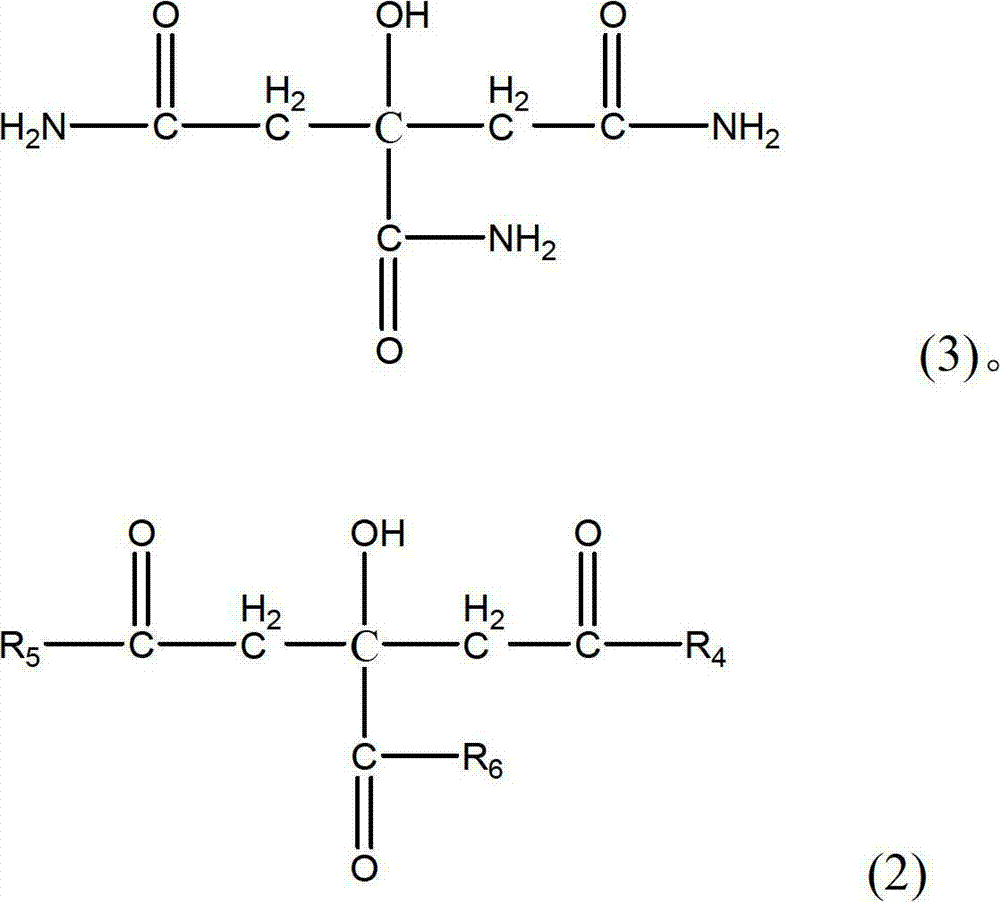A kind of processing method of polyisoprene solution
A polyisoprene and treatment method technology, which is applied in the field of polyisoprene solution treatment, can solve problems such as poor effects, and achieve the effects of low cost, less pollution, and easy operation
- Summary
- Abstract
- Description
- Claims
- Application Information
AI Technical Summary
Problems solved by technology
Method used
Image
Examples
Embodiment 1
[0055] Under the protection of nitrogen, add 1700g hexane, 350gIP to the 5L reactor, add TiCl 4 / triisobutylaluminum / diphenyl ether (the molar ratio of the three is 1.0:1.0:0.5) the hexane solution of the catalyst, the catalyst dosage is 1.0×10 -3 molTi / molIP, the monomer concentration is 17% by weight. React at 20°C for 2 hours to obtain a polymer solution containing an active catalyst with a polymer (polyisoprene) weight percentage of 15%.
[0056] At 60° C., 132.61 g of a 50% by weight sodium citrate aqueous solution was added to the above polymer solution, and 6.3 g of 10% by weight stabilizer 2,2'-methylenebis-(4- Methyl-6-tert-butylphenol) in hexane, stirred for 30 minutes.
[0057] Wash the above-mentioned polymer solution with 3L deionized water once; then let it stand for 30 minutes for oil-water separation; after decanting the water phase, strip the oil phase with steam and dry it in vacuum to obtain the catalyst and Stabilized polyisoprene.
[0058] The metal ti...
Embodiment 2
[0060]Under the protection of nitrogen, add 1980g hexane, 350gIP to the 5L reactor, add TiCl 4 / triisobutylaluminum / diphenyl ether (the molar ratio of the three is 1.0:1.0:0.5) the hexane solution of the catalyst, the catalyst dosage is 1.0×10 -3 molTi / molIP, the monomer concentration is 15% by weight. React at 20°C for 2 hours to obtain a polymer solution containing an active catalyst with a polymer (polyisoprene) weight percentage of 12%.
[0061] At 60°C, 787.23g of an aqueous solution of potassium citrate with a mass percent concentration of 1% by weight was added to the above polymer solution, and 8.75 g of a stabilizer N-phenyl-N'-cyclohexylterephthalene containing 20% by weight was added. The amine solution in hexane was stirred for 30 minutes.
[0062] Wash the above-treated polymer solution with 3.5L deionized water for 3 times; then let it stand for 30 minutes to separate oil from water; after decanting the water phase, strip the oil phase with steam and dry it i...
Embodiment 3
[0065] Under the protection of nitrogen, add 2340g hexane, 350gIP into the 5L reactor, add TiCl 4 / triisobutylaluminum / diphenyl ether (the molar ratio of the three is 1.0:1.0:0.5) the hexane solution of the catalyst, the catalyst dosage is 1.0×10 -3 molTi / molIP, the monomer concentration is 13% by weight. React at 20°C for 2 hours to obtain a polymer solution containing an active catalyst with a polymer (polyisoprene) weight percentage of 10%.
[0066] At 60°C, add 212.19g of a 25% by weight sodium citrate aqueous solution to the above polymer solution, and add 9.8 g of 20% by weight of stabilizer N-phenyl-N'-isopropyl p-phenylene Diamine in hexane, stirred for 30 minutes.
[0067] Wash the above-treated polymer solution twice with 4.5L deionized water; then let it stand for 30 minutes to separate oil from water; after decanting the water phase, strip the oil phase with steam and dry it in vacuum to obtain and stabilized polyisoprene.
[0068] The metal titanium content in...
PUM
 Login to View More
Login to View More Abstract
Description
Claims
Application Information
 Login to View More
Login to View More - R&D
- Intellectual Property
- Life Sciences
- Materials
- Tech Scout
- Unparalleled Data Quality
- Higher Quality Content
- 60% Fewer Hallucinations
Browse by: Latest US Patents, China's latest patents, Technical Efficacy Thesaurus, Application Domain, Technology Topic, Popular Technical Reports.
© 2025 PatSnap. All rights reserved.Legal|Privacy policy|Modern Slavery Act Transparency Statement|Sitemap|About US| Contact US: help@patsnap.com



